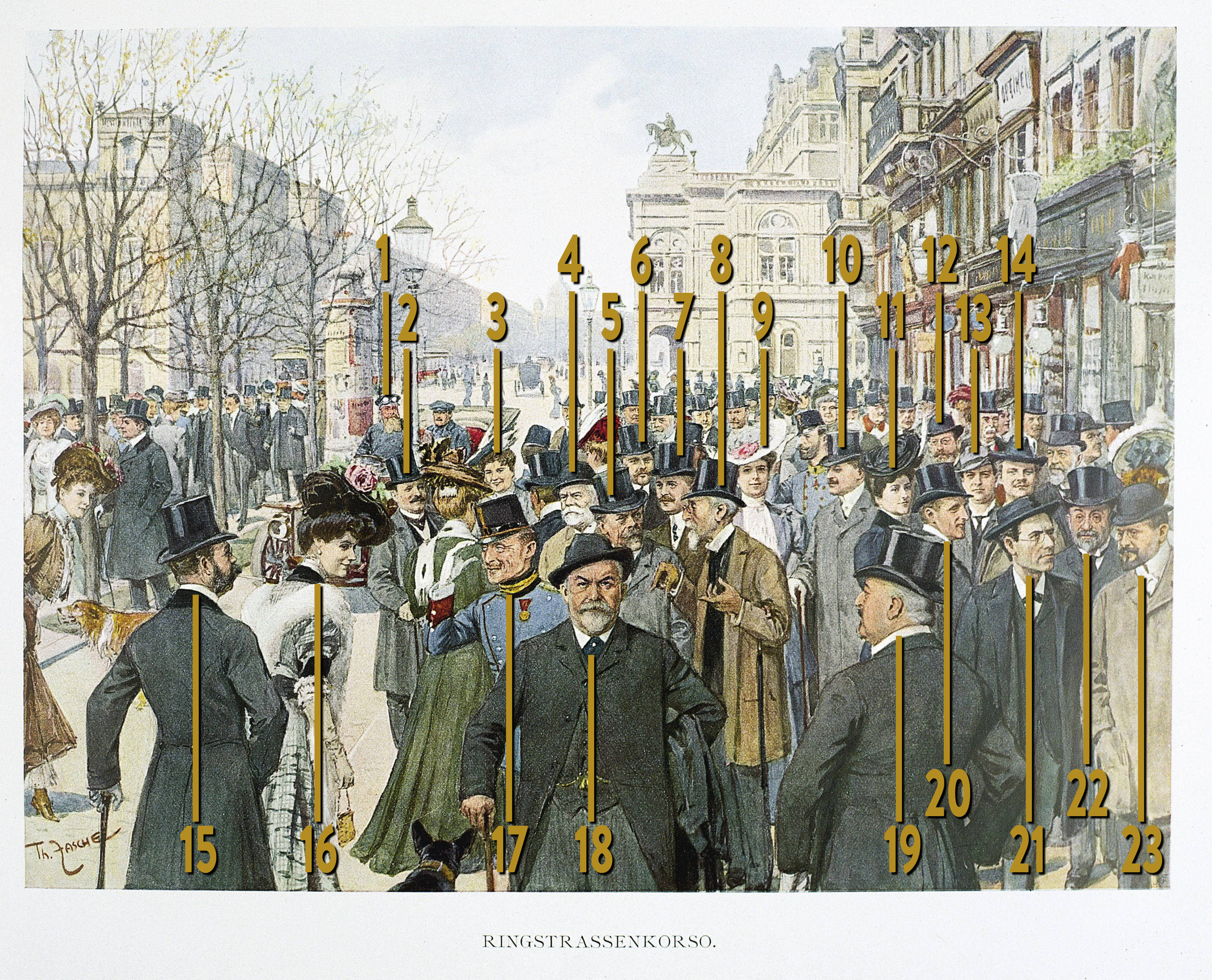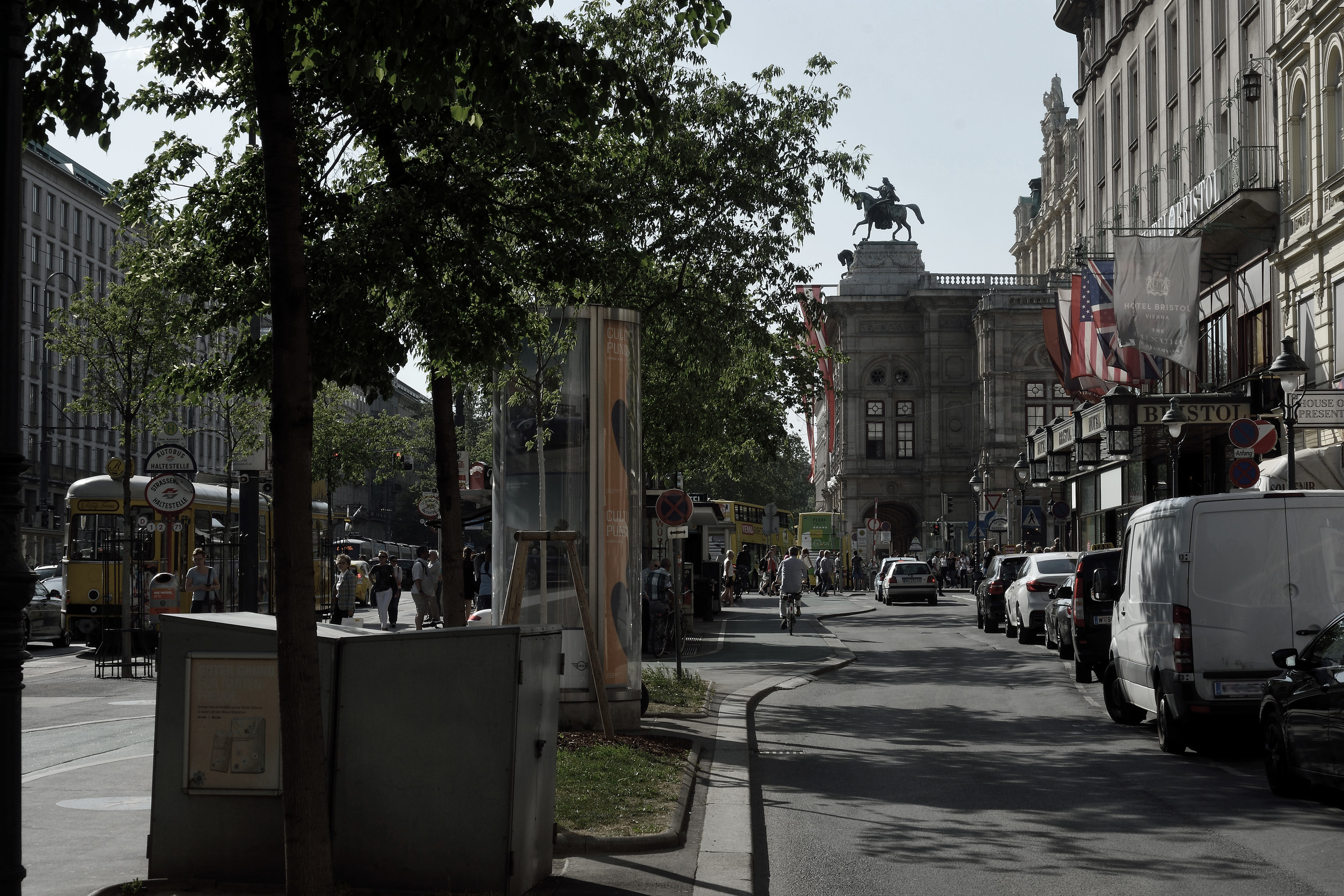Neither the Champs Élyseés in Paris nor the Kurfürstendamm in Berlin radiate as glamorous an atmosphere as Vienna’s Ringstrasse. No, this is not a romanticized view of one’s hometown. It is for real!
No other country was formed in this way, characterised by imperial grandeur, torn by two World Wars and ultimately freed by the Allies on May 8, 1945. The attentive observer on the Ringstrasse can discover all of this, perhaps not all of it overt, but rather in the vibe and the details that this place still bears. The Ringstrasse is a boulevard that encourages people to linger and saunter, one that inspires dreams, stimulates the imagination and inspires many a great spirit, today just as it did on a Sunday morning around 1900.
The sun laughs and, like every Sunday morning, there’s a lot of hustle and bustle on the streets. The coffeehouses are full, as are the confectioneries Gerstner, Sacher, as well as Demel. The horse-drawn carriages extend their coarse greetings to one another the sound of a distant tram rings in the air. The Ringstrasse is not far away.
Ludwig turns the corner and finds himself amidst a group of people. Women showing off their latest fashion acquisitions, men in their uniforms decorated with medals and visible pride line the Ringstrasse. The advertising columns, with their colourful placards, are vying for attention. The whole world is trying to be seen here in this metropolis, the heart of Europe. The lustre of one of the most powerful ruling dynasties of Europe, which provided stability for over 600 years, lies over the pedestrians between Kärntner Strasse and Schwarzenbergplatz.
Ludwig Bösendorfer notices virtually none of this. He is ruminating, for his mind is buzzing and humming like a beehive. He fails even to notice that Otto Wagner is walking directly next to him on the Ringstrasse and is smiling at him while giving him a friendly greeting. Gustav Mahler is walking a few steps ahead of Ludwig, his head tilted slightly downward; an invisible greatness which he likely hardly notices clings to him.
Ludwig smiles, yet he hardly takes notice of the people around him. He naturally smiles at people who greet him, yet he is actually working. Ferruccio Busoni has been nagging him for days. Busoni is working on a transcription of Bach’s organ works, yet he requires more bass notes for Bach’s masterful ideal sound of a pipe organ’s 16- and 32-foot pipes. Ludwig already had an idea that took possession of him in recent nights. It would indeed be possible to translate the deep pedal notes of an organ to a piano, yet this would mean breaking with the tradition for which Bösendorfer had already become so famous.

